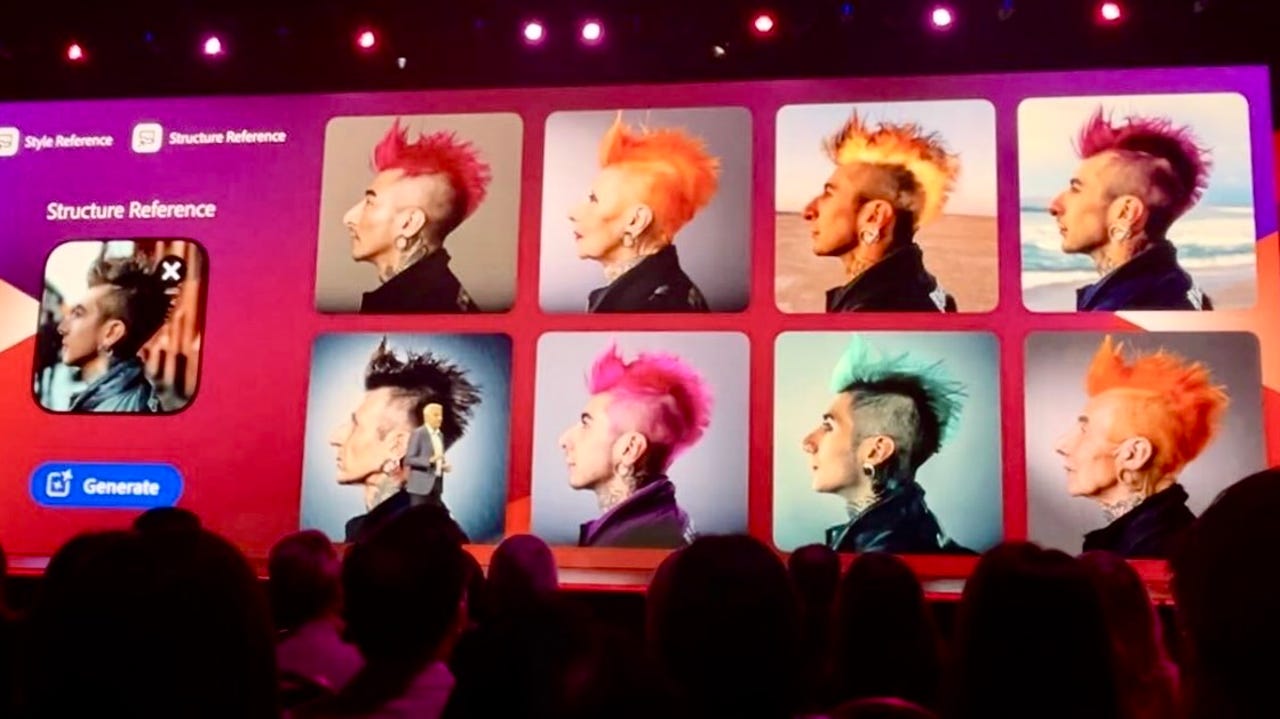
The ability to use generative artificial intelligence (AI) to create images from a simple text input has taken the world by storm. However, companies continue to develop new ways to upgrade the AI experience — and Adobe has made some bold steps in that direction with its latest feature update.
On Tuesday, at Adobe Summit, the company unveiled Structure Reference capabilities in Adobe Firefly, its text-to-image generator. This capability gives users even more control over the output of generated images.
Also: Adobe announces generative AI tools to reinvent ad campaigns
With Structure Reference, users can input an image they want the AI model to use as a template. The model then uses this structure to create a new image with the same layout and composition.
For example, during the live event demo, a user input an image of a person’s profile as a structure reference. Then, Firefly output several new pictures that kept the ‘structure’ of the original profile photo, as seen below:
Users can tweak the “strength” of the structure reference, or how much the model adheres to the reference’s image structure when they create a new image.
For example, if you want Firefly to use the input image as a loose guideline, you can move the stub to the lower end of the strength spectrum. However, if you want the image to adhere to the reference exactly, you can set the tool to maximum strength.
Also: Apple confirms WWDC 2024 for June 10 – will AI steal the show?
This new feature in Firefly works alongside Style Reference, also seen in the demo above, which uses an image as a reference to generate a new image in the same style. This new picture uses the reference and keeps the same stylistic choices, such as feel and color scheme.
Users can now use a combination of Style Reference and Structure Reference, and detailed prompts, to ensure that the image generated matches their needs as much as possible on the first attempt.
“It’s like going from 2D to 3D, to go beyond words into a more multimodal approach, that includes sketches and images,” said Deepa Subramaniam, VP of product marketing, creative professional at Adobe to ZDNET.
Also: How ChatGPT became my virtual assistant for a data project
Using images as guidelines means users don’t have to create a prompt and tweak it several times to get the desired outcome. This feature is useful when users can’t find the words to describe the image they are visualizing and a quick sketch or reference image can convey the description.
Adobe shipped Structure Reference to Firefly on the web and mobile via an update. You can try it for free by visiting the Adobe Firefly website, where you can start tinkering by uploading different images and text prompts.
Disclosure: The cost of Sabrina Ortiz’s travel to Las Vegas for Adobe Summit was covered by Adobe, a common industry practice for long-distance trips. The judgments and opinions of ZDNET’s writers and editors are always independent of the companies we cover.




















+ There are no comments
Add yours